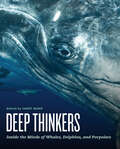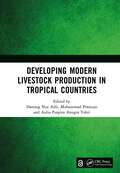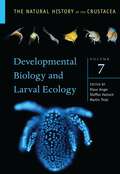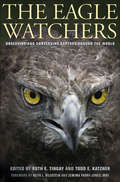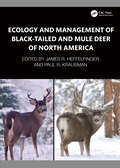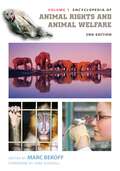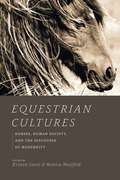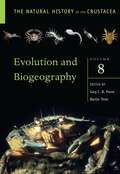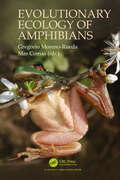- Table View
- List View
Curlew (UEB Uncontracted)
This is a Curlew shown from the side with its head facing to the left. There is a locator dot shown, which will be at the top left of the page when the image is the right way up. At the far left of the picture is the Curlew's long, downward-curving beak. To the right of this is its head, with one eye showing. Further to the right is the Curlew's body with one wing visible. Down the page from this are its very long legs. Its plumage is mainly grey-brown.
Deep Thinkers: Inside the Minds of Whales, Dolphins, and Porpoises
Humans aside, dolphins, whales, and porpoises are often considered to be the smartest creatures on Earth. Science and nature buffs are drawn to stories of their use of tools, their self-recognition, their beautiful and complex songs, and their intricate societies. But how do we know what we know, and what does it mean? In Deep Thinkers, renowned cetacean biologist Janet Mann gathers a gam of the world’s leading whale and dolphin researchers—including Luke Rendell, Hal Whitehead, and many more—to illuminate these vital questions, exploring the astounding capacities of cetacean brains. Diving into our current understanding of and dynamic research on dolphin and whale cognition, communication, and culture, Deep Thinkers reveals how incredibly sophisticated these mammals are—and how much we can learn about other animal minds by studying cetacean behavior. Through a combination of fascinating text and more than 150 beautiful and informative illustrations, chapters compare the intelligence markers of cetaceans with those of birds, bats, and primates, asking how we might properly define intelligence in nonhumans. As all-encompassing and profound as the seas in which these deep cetacean cultures have evolved, Deep Thinkers is an awesome and inspiring journey into the fathoms—a reminder of what we gain through their close study, and of what we lose when the great minds of the sea disappear.
Developing Modern Livestock Production in Tropical Countries: Proceedings of the 5th Animal Production International Seminar (APIS 2022), Malang, Indonesia, 10 November 2022
The Animal Production International Seminar (APIS) is the first international conference held by the Faculty of Animal Science, Universitas Brawijaya. APIS was held for the first time in 2010 and was repeated every three years. In 2022, the 5th APIS was organized as an online meeting. The Faculty of Animal Science, Universitas Brawijaya, is optimistic that the results of the 5th APIS will just be as successful as the 4th APIS in 2019. The theme of 5th APIS was "Developing Modern Livestock Production in Tropical Countries". The 5th APIS discussed matters related to strategies for developing modern livestock production in several tropical countries. The participants of 5th APIS, including keynote speakers and invited speakers, are from various countries (tropical and sub-tropical). These proceedings present the selected papers from the 5th APIS conference.
Developmental Biology and Larval Ecology: The Natural History of the Crustacea, Volume 7 (The Natural History of the Crustacea)
This is the seventh volume of a ten-volume series on The Natural History of the Crustacea. Chapters in this volume synthesize our current understanding of early crustacean development from the egg through the embryonic and larval phase. The first part of this book focuses on the elemental aspects of crustacean embryonic development. The second part of the book provides an account of the larval phase of crustaceans and describes processes that influence the development from hatching to an adult-like juvenile. The third and final part of the book explores ecological interactions during the planktonic phase and how crustacean larvae manage to find food, navigate the dynamic water column, and avoid predators in a medium that offers few refuges.
Dog (Large Print)
This is an image of tall, light brown dog facing left and seen from the side. There is a locator dot shown, which will be at the top left of the page when the image is the right way up.The dog's head is in the top left of the page. It is facing left so that only one eye and ear can be found. Its nose is on the left and its mouth is slightly down from this. Further right is its eye and ear. Down and right, the dog is wearing a collar with a nametag hanging down from it. Down and right again is the dog's body with four legs reaching down to the bottom of the page. Its long tail is sticking out from the right of its body.
Dog (UEB Contracted)
This is an image of tall, light brown dog facing left and seen from the side. There is a locator dot shown, which will be at the top left of the page when the image is the right way up.The dog's head is in the top left of the page. It is facing left so that only one eye and ear can be found. Its nose is on the left and its mouth is slightly down from this. Further right is its eye and ear. Down and right, the dog is wearing a collar with a nametag hanging down from it. Down and right again is the dog's body with four legs reaching down to the bottom of the page. Its long tail is sticking out from the right of its body.
Dog (UEB Uncontracted)
This is an image of tall, light brown dog facing left and seen from the side. There is a locator dot shown, which will be at the top left of the page when the image is the right way up.The dog's head is in the top left of the page. It is facing left so that only one eye and ear can be found. Its nose is on the left and its mouth is slightly down from this. Further right is its eye and ear. Down and right, the dog is wearing a collar with a nametag hanging down from it. Down and right again is the dog's body with four legs reaching down to the bottom of the page. Its long tail is sticking out from the right of its body.
Dragonfly (Large Print)
This page shows a dragonfly seen from above and facing the top of the page. There is a locator dot shown, which will be at the top left of the page when the image is the right way up. Just down the page, there is a silhouette of the dragonfly at approximately real size. In the centre of the page is the dragonfly's head with two antenna (feelers) and two eyes. Down the page is the thorax with three legs and a pair of wings to either side. The wings have a delicate pattern of veins on them. At the bottom of the page is the dragonfly's abdomen, which is divided into segments.
Dragonfly (UEB Contracted)
This page shows a dragonfly seen from above and facing the top of the page. There is a locator dot shown, which will be at the top left of the page when the image is the right way up. Just down the page, there is a silhouette of the dragonfly at approximately real size. In the centre of the page is the dragonfly's head with two antenna (feelers) and two eyes. Down the page is the thorax with three legs and a pair of wings to either side. The wings have a delicate pattern of veins on them. At the bottom of the page is the dragonfly's abdomen, which is divided into segments.
Dragonfly (UEB uncontracted)
This page shows a dragonfly seen from above and facing the top of the page. There is a locator dot shown, which will be at the top left of the page when the image is the right way up. Just down the page, there is a silhouette of the dragonfly at approximately real size. In the centre of the page is the dragonfly's head with two antenna (feelers) and two eyes. Down the page is the thorax with three legs and a pair of wings to either side. The wings have a delicate pattern of veins on them. At the bottom of the page is the dragonfly's abdomen, which is divided into segments.
The Eagle Watchers: Observing and Conserving Raptors around the World
Eagles have fascinated humans for millennia. For some, the glimpse of a distant eagle instantly becomes a treasured lifelong memory. Others may never encounter a wild eagle in their lifetime. This book was written by people who have dedicated years to the study of eagles, to provide an insider's view for all readers, but especially those who have never been up close and personal with these magnificent yet often misunderstood creatures. In their stories, twenty-nine leading eagle researchers share their remarkable field experiences, providing personal narratives that don't feature in their scientific publications. They tell of their fear at being stalked by grizzly bears, their surprise at being followed by the secret police, their embarrassment when accidentally firing mortar rockets over a school gymnasium, and their sense of awe at tracking eagles via satellite. The reader experiences the cultural shock of being guest of honor at a circumcision ceremony, the absurdity of sharing an aquatic car with the Khmer Rouge, and the sense of foreboding at being press-ganged into a frenzied tribal death march through the jungle. The Eagle Watchers covers twenty-four species on six continents, from well known (bald eagle; golden eagle), to obscure (black-and-chestnut eagle; New Guinea harpy eagle), and from common (African fish eagle) to critically endangered (Philippine eagle; Madagascar fish eagle). The diverse experiences vividly described in this book reveal the passion, dedication, and sense of adventure shared by those who study these majestic birds and strive for their conservation. Featuring stunning color photographs of the eagles, information on raptor conservation, a global list of all eagle species with ranges and conservation status, and a color map of the sites visited in the book, The Eagle Watchers will appeal to birders, conservationists, and adventure travelers alike. To further support the conservation programs described in this book, all royalties are being donated to two leading nonprofit organizations for raptor conservation training and fieldwork: Hawk Mountain Sanctuary Intern Program and the National Birds of Prey Trust.
Earthworm (Large Print)
This is a picture of an earthworm viewed from above. There is a locator dot shown, which will be at the top left of the page when the image is the right way up. Just down the page, there is a silhouette of the worm at approximately real size. At the left, in the middle of the page, is the worm's head. Its long body, made of many segments, curves around to its tail on the right of the page.
Earthworm (UEB Contracted)
This is a picture of an earthworm viewed from above. There is a locator dot shown, which will be at the top left of the page when the image is the right way up. Just down the page, there is a silhouette of the worm at approximately real size. At the left, in the middle of the page, is the worm's head. Its long body, made of many segments, curves around to its tail on the right of the page.
Earthworm (UEB uncontracted)
This is a picture of an earthworm viewed from above. There is a locator dot shown, which will be at the top left of the page when the image is the right way up. Just down the page, there is a silhouette of the worm at approximately real size. At the left, in the middle of the page, is the worm's head. Its long body, made of many segments, curves around to its tail on the right of the page.
Ecology and Management of Black-tailed and Mule Deer of North America
Black-tailed and mule deer represent one of the largest distributions of mammals in North America and are symbols of the wide-open American West. Each chapter in this book was authored by the world’s leading experts on that topic. Both editors, James R. Heffelfinger and Paul R. Krausman, are widely published in the popular and scientific press and recipients of the O. C. Wallmo Award, given every two years to a leading black-tailed and mule deer expert who has made significant contributions to the conservation of this species. In addition, Heffelfinger has chaired the Mule Deer Working Group sponsored by the Western Association of Fish and Wildlife Agencies for more than 15 years. This working group consists of the leading black-tailed and mule deer experts from each of 24 states, provinces, and territories in western North America, putting them at the forefront of all conservation and much of the research on this species. The book represents all current knowledge available on these deer, including how changing conditions such as fires, habitat alteration and loss, disease, climate change, socio-economic forces, energy development, and other aspects are influencing their distribution and abundance now and into the future. It takes a completely fresh look at all chapter topics. The revisions of distribution, taxonomy, evolution, behavior, and new and exciting work being done in deer nutrition, migration and movements, diseases, predation, and human dimensions are all assembled in this volume. This book will instantly become the foundation for the latest information and management strategies to be implemented on the ground by practitioners and to inform the public. Although this book is about deer, the topics discussed influence most terrestrial wildlife worldwide, and the basic concepts in many of the chapters are applicable to other species.
Elephant (UEB contracted)
This elephant is shown from the side; with it's head on the right of the page and tail on the left. There is a locator dot shown, which will be at the top left of the page when the image is the right way up. It is a very large animal with pointed tusks and long trunk, and is looking straight ahead of him. To the right of its eye and down, is the elephant's two tusks, below these is the elephant's long trunk. To the left of the head is the large ear, then its big body which is standing on all four legs with toes at the front of his feet. On the left of the page is the elephant's long thin tail with a tuft of hair at the end.
Elephant (UEB uncontracted)
This elephant is shown from the side; with it's head on the right of the page and tail on the left. There is a locator dot shown, which will be at the top left of the page when the image is the right way up. It is a very large animal with pointed tusks and long trunk, and is looking straight ahead of him. To the right of its eye and down, is the elephant's two tusks, below these is the elephant's long trunk. To the left of the head is the large ear, then its big body which is standing on all four legs with toes at the front of his feet. On the left of the page is the elephant's long thin tail with a tuft of hair at the end.
Encyclopedia of Animal Rights and Animal Welfare [2 volumes]: [2 volumes]
A landmark publishing achievement on the subject, the new edition of this acclaimed encyclopedia is expanded to two volumes, covering the full range of issues related to animal protection.Expanded to two volumes, the comprehensively updated new edition, Encyclopedia of Animal Rights and Animal Welfare: Second Edition is an extraordinary publishing event. It remains the only reference to cover the entire scope of animal rights and welfare from a global interdisciplinary perspective, with an international team of contributors assembled by Marc Bekoff covering animal treatment issues in the United States, China, India, Kenya, Australia, and many other nations. With a focused emphasis on fairness and justice for animals evident on every page, Encyclopedia of Animal Rights and Animal Welfare: Second Edition offers clear explanations of hot-button topics like puppy mills, endangered species in zoos, no-kill shelters, dog fighting, factory farming and disease, veganism, conservation ethics, wildlife contraception, and more. The encyclopedia also explores a range of religious, ethical, and philosophical views on using animals, as well as the latest research on animal cognition and sentience. The work helps readers understand the different viewpoints of animal welfare advocates who want to improve conditions for animals and animal rights activists who don't want animals used at all.
Equestrian Cultures: Horses, Human Society, and the Discourse of Modernity (Animal Lives)
As much as dogs, cats, or any domestic animal, horses exemplify the vast range of human-animal interactions. Horses have long been deployed to help with a variety of human activities—from racing and riding to police work, farming, warfare, and therapy—and have figured heavily in the history of natural sciences, social sciences, and the humanities. Most accounts of the equine-human relationship, however, fail to address the last few centuries of Western history, focusing instead on pre-1700 interactions. Equestrian Cultures fills in the gap, telling the story of how prominently horses continue to figure in our lives, up to the present day. Kristen Guest and Monica Mattfeld place the modern period front and center in this collection, illuminating the largely untold story of how the horse has responded to the accelerated pace of modernity. The book’s contributors explore equine cultures across the globe, drawing from numerous interdisciplinary sources to show how horses have unexpectedly influenced such distinctively modern fields as photography, anthropology, and feminist theory. Equestrian Cultures boldly steps forward to redefine our view of the most recent developments in our long history of equine partnership and sets the course for future examinations of this still-strong bond.
The Ethics of Captivity
In the United States roughly 2 million people are incarcerated; billions of animals are held captive (and then killed) in the food industry every year; hundreds of thousands of animals are kept in laboratories; thousands are in zoos and aquaria; millions of "pets" are captive in our homes. Surprisingly, despite the rich ethical questions it raises, very little philosophical attention has been paid to questions raised by captivity. Though conditions of captivity vary widely for humans and for other animals, there are common ethical themes that imprisonment raises, including the value of liberty, the nature of autonomy, the meaning of dignity, and the impact of routine confinement on physical and psychological well-being. This volume brings together scholars, scientists, and sanctuary workers to address in fifteen new essays the ethical issues captivity raises. Section One contains chapters written by those with expert knowledge about particular conditions of captivity and includes discussion of how captivity is experienced by dogs, whales and dolphins, elephants, chimpanzees, rabbits, formerly farmed animals, and human prisoners. Section Two contains chapters by philosophers and social theorists that reflect on the social, political, and ethical issues raised by captivity, including discussions about confinement, domestication, captive breeding for conservation, the work of moral repair, dignity and an ethics of sight, and the role that coercion plays.
Evolution and Biogeography: Volume 8 (The Natural History of the Crustacea)
This is the eighth volume of a ten-volume series on The Natural History of the Crustacea. The volume examines Evolution and Biogeography, and the first part of this volume is entirely dedicated to the explanation of the origins and successful establishment of the Crustacea in the oceans. In the second part of the book, the biogeography of the Crustacea is explored in order to infer how they conquered different biomes globally while adapting to a wide range of aquatic and terrestrial conditions. The final section examines more general patterns and processes, and the chapters offer useful insight into the future of crustaceans.
Evolutionary Ecology of Amphibians
Amphibians are the oldest tetrapod group and show an astonishing diversity in lifestyles, many of them being unique. However, globally, they are on a decline. Hence, their study is fundamental to understanding the evolution of diversity and conserving them. This book, authored by experts from around the world, summarizes the current knowledge on the evolutionary ecology of amphibians. The book treats biological concepts related to the evolution, ecology, physiology, immunology, behaviour, and morphology of amphibians in their different states. This book constitutes an actualized work indispensable for evolutionary ecologists and herpetologists.
Fly (Large Print)
This is a picture of a fly viewed from the top and facing towards the top of the page. There is a locator dot shown, which will be at the top left of the page when the image is the right way up. Just down the page, there is a silhouette of the fly at approximately real size. Its head with mouth parts and two enormous eyes is at the top centre of the page. Down the page, the fly's thorax is shown, with two legs and a wing on either side. Further down the page is the abdomen with a leg on either side. Although this cannot be seen, these legs connect to the underside of the thorax. The abdomen is covered in fine hairs.
Fly (UEB Contracted)
This is a picture of a fly viewed from the top and facing towards the top of the page. There is a locator dot shown, which will be at the top left of the page when the image is the right way up. Just down the page, there is a silhouette of the fly at approximately real size. Its head with mouth parts and two enormous eyes is at the top centre of the page. Down the page, the fly's thorax is shown, with two legs and a wing on either side. Further down the page is the abdomen with a leg on either side. Although this cannot be seen, these legs connect to the underside of the thorax. The abdomen is covered in fine hairs.
Fly (UEB uncontracted)
This is a picture of a fly viewed from the top and facing towards the top of the page. There is a locator dot shown, which will be at the top left of the page when the image is the right way up. Just down the page, there is a silhouette of the fly at approximately real size. Its head with mouth parts and two enormous eyes is at the top centre of the page. Down the page, the fly's thorax is shown, with two legs and a wing on either side. Further down the page is the abdomen with a leg on either side. Although this cannot be seen, these legs connect to the underside of the thorax. The abdomen is covered in fine hairs.

